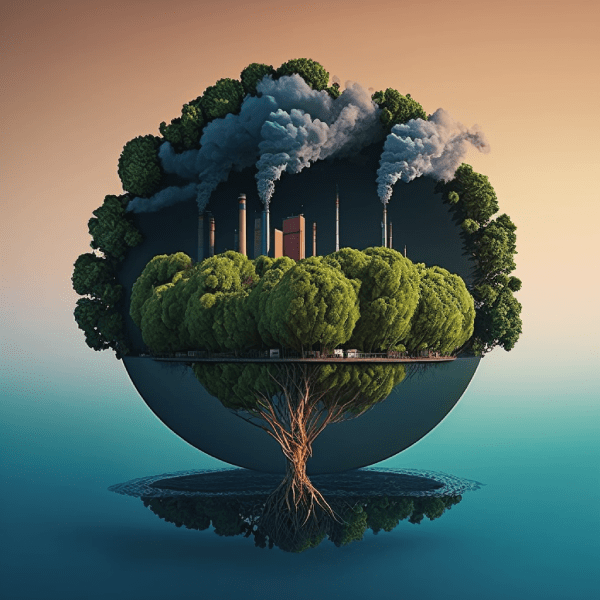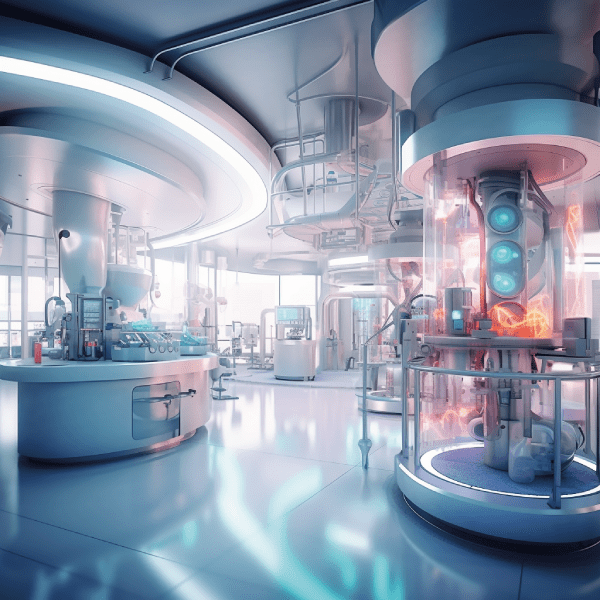Sustainability in action: implementing the European Green Deal
The European Green Deal (EGD) is a comprehensive set of policies and initiatives introduced by the European Commission in December 2019, with the aim of making the European Union (EU) a climate-neutral continent by 2050.
The Green Deal is based on the principle of sustainability and seeks to address the challenges posed by climate change and environmental degradation, while at the same time creating economic growth and ensuring social justice. It includes a range of measures and targets across a variety of sectors, including energy, transport, agriculture, and industry.
Some of the key objectives of the European Green Deal include:
- Achieving climate neutrality by 2050, which means that the EU will no longer contribute to global warming
- Reducing greenhouse gas emissions by at least 55% by 2030, compared to 1990 levels
- Increasing the share of renewable energy to at least 32% by 2030
- Accelerating the transition to a circular economy, where resources are used more efficiently and waste is minimized
- Protecting biodiversity and restoring degraded ecosystems
- Improving air and water quality
- Supporting sustainable agriculture and forestry
- Investing in research and innovation to develop new technologies and solutions for a sustainable future.
Green opportunities: business prospects in the era of the EGD
The European Green Deal is considered one of the most ambitious environmental plans in the world and has received widespread support from governments, businesses, and civil society organizations. Its implementation will require significant investments, regulatory changes, and societal transformation, but it is seen as a crucial step towards a sustainable and resilient future for Europe and the world.
The European Green Deal includes a wide range of measures and policies to achieve its ambitious goals. Here are some examples of the measures planned to achieve each of the abovementioned goals:
- Achieving climate neutrality by 2050:
- Introducing a European Climate Law to make the target legally binding
- Increasing the use of renewable energy sources, such as wind and solar power
- Encouraging energy efficiency measures in buildings, transport, and industry
- Supporting the development of low-carbon technologies, such as electric vehicles and carbon capture and storage
- Reducing greenhouse gas emissions by at least 55% by 2030:
- Increasing the share of renewable energy sources to at least 32% by 2030
- Strengthening the EU Emissions Trading System (ETS) to further reduce emissions in the power and industrial sectors
- Setting new, more ambitious emissions reduction targets for Member States
- Encouraging the use of cleaner fuels in transport, such as electric vehicles and biofuels
- Increasing the share of renewable energy to at least 32% by 2030:
- Supporting the development of renewable energy sources, such as wind, solar, and geothermal power
- Encouraging the use of renewable energy in heating and cooling systems, as well as in the transport sector
- Increasing the deployment of energy storage solutions to ensure a stable and reliable supply of renewable energy
- Accelerating the transition to a circular economy:
- Introducing a Circular Economy Action Plan to promote sustainable production and consumption patterns
- Setting targets for reducing waste and increasing recycling rates
- Encouraging the use of circular business models, such as product-as-a-service and sharing platforms
- Promoting eco-design and sustainable materials in products and packaging
- Protecting biodiversity and restoring degraded ecosystems:
- Introducing a Biodiversity Strategy to halt biodiversity loss and restore ecosystems
- Protecting and restoring forests, wetlands, and other natural habitats
- Promoting sustainable agriculture and forestry practices
- Reducing the use of pesticides and fertilizers, and supporting organic farming
- Improving air and water quality:
- Introducing new regulations to reduce air pollution from industry, transport, and agriculture
- Encouraging the use of cleaner fuels and vehicles in transport
- Promoting water efficiency and reducing water pollution
- Supporting the implementation of the EU Water Framework Directive to ensure good water quality in rivers, lakes, and seas
- Supporting sustainable agriculture and forestry:
- Introducing a Farm to Fork Strategy to promote sustainable food systems and reduce food waste
- Supporting organic farming and agroecology
- Promoting sustainable forestry practices, such as reducing deforestation and promoting reforestation
- Encouraging the use of sustainable bioenergy, such as biomass from forestry residues
- Investing in research and innovation to develop new technologies and solutions for a sustainable future:
- Increasing funding for research and innovation in areas such as renewable energy, circular economy, and sustainable mobility
- Supporting the development of low-carbon technologies, such as carbon capture and storage and hydrogen fuel cells
- Encouraging collaboration between industry, academia, and government to accelerate innovation and adoption of sustainable solutions.
The implementation of the European Green Deal will bring significant changes to entrepreneurs and businesses across various sectors. Some of the key changes that businesses can expect include:
Navigating the green regulatory landscape: strategies for businesses under the European Green Deal
- Stricter regulations: The European Green Deal will introduce stricter regulations to reduce greenhouse gas emissions, promote sustainable production and consumption, and protect the environment. This may mean that businesses will have to comply with new rules and standards, such as emissions limits, waste reduction targets, and energy efficiency requirements.
- Increased focus on sustainability: The Green Deal places a strong emphasis on sustainability and circular economy principles. This means that businesses will need to consider the environmental impact of their products and services throughout their life cycle, from production to disposal. There will be a growing demand for sustainable and eco-friendly products and services, and businesses that fail to meet these expectations may lose out on customers and market share.
- Investment in green technologies: The European Green Deal will provide funding and support for the development and deployment of green technologies, such as renewable energy, energy storage, and carbon capture and storage. This presents opportunities for businesses that operate in these sectors to access new markets and funding streams.
- Shift towards low-carbon economy: The Green Deal aims to accelerate the transition to a low-carbon economy, which will require significant changes in the way businesses operate. Companies that rely heavily on fossil fuels or high-carbon processes may need to transition to low-carbon alternatives, such as renewable energy and electrification.
- New business models: The Green Deal will also drive innovation in business models, as companies seek to reduce waste, increase efficiency, and promote circularity. This may involve new collaborations and partnerships across industries, as well as the development of new products and services that promote sustainability.
Overall, the European Green Deal presents both challenges and opportunities for entrepreneurs and businesses. Those that are able to adapt to the changing regulatory landscape and embrace sustainable practices are likely to thrive in the low-carbon economy of the future.
Interesting facts
- The European Union is responsible for 9% of global greenhouse gas emissions. (Climate Action Tracker, 2021)
- The transition to a sustainable economy could generate €2.8 trillion in annual revenue for European businesses by 2030. (BCG, 2021)
- Renewable energy sources accounted for 38% of the EU’s electricity consumption in 2020, up from 14% in 2004. (Eurostat, 2021)
- The transition to a sustainable economy is expected to create up to 900,000 new jobs in the energy sector alone by 2030. (IRENA, 2021)
- The circular economy could generate €1.8 trillion in economic benefits for the EU by 2030, while reducing greenhouse gas emissions and creating jobs. (Ellen MacArthur Foundation, 2021)
- The European Green Deal aims to plant three billion trees by 2030, which would help to sequester carbon dioxide and improve biodiversity. (WWF, 2021)
- The EU is aiming to reduce pesticide use by 50% and increase organic farming by 25% by 2030 through the implementation of the Farm to Fork strategy. (Greenpeace, 2021)
- The European Green Deal aims to reduce the EU’s dependence on imported fossil fuels, which account for 70% of its energy consumption. (Euractiv, 2021)
- The EU’s buildings are responsible for 40% of its energy consumption and 36% of its greenhouse gas emissions. (European Parliament, 2021)
- The transition to a sustainable economy is expected to have positive impacts on public health, such as reducing air pollution and improving access to green spaces. (The Lancet, 2021)



